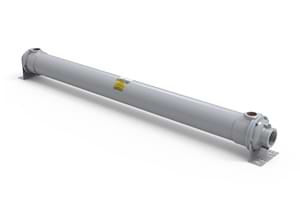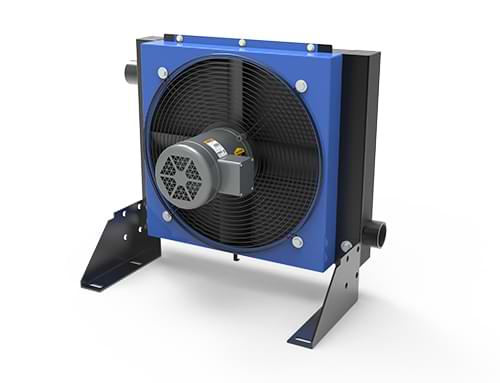Aftercoolers for Marine Applications
Aftercoolers cool the compressed air exiting a turbocharger or supercharger before it enters the engine’s combustion chamber. This process increases air density, allowing more oxygen to be available for combustion, which improves power output, fuel efficiency, and reduces emissions—a vital consideration for modern marine regulations.
Applications
- Commercial Shipping: Large cargo ships and tankers, such as those powered by MAN B&W or Wärtsilä engines, use aftercoolers to optimize fuel consumption over long voyages. For example, the Wärtsilä RT-flex series integrates advanced aftercooling to meet stringent IMO Tier III emissions standards.
- Fishing Vessels: Trawlers and other fishing boats rely on aftercoolers to maintain engine reliability during extended periods of operation. A vessel like the Cummins QSK19-M, commonly used in fishing fleets, employs an aftercooler to sustain power while hauling heavy nets.
- High-Performance Yachts: Luxury yachts and racing boats, such as those equipped with MTU Series 2000 engines, use aftercoolers to achieve higher speeds and responsiveness. The cooled air improves throttle response, critical for competitive or leisure sailing.
Water Cooled Aftercoolers
Compressor Cooling
- Fixed or Removable Tube Bundles
- Material Options Available
- Standard and Custom Options

Air Cooled Aftercoolers
Compressor Cooling
- Use Ambient Air to Cool
- Variety of Motor Options
- Standard Pressures of Up To 250 psi

Aftercoolers for Marine Applications
In marine diesel engines, turbocharging is widely used to boost power without significantly increasing engine size or weight, which is crucial for vessels where space and stability are at a premium. However, the compression process heats the air, reducing its density and efficiency. Aftercoolers counteract this by using either air-to-air or water-to-air cooling systems. Water-to-air aftercoolers are particularly common in marine applications due to the abundance of seawater or freshwater from the vessel’s cooling system. By lowering the intake air temperature, aftercoolers can increase engine power by 10-20%, depending on the design and operating conditions.
Aftercoolers also extend engine life by reducing thermal stress on components like pistons and valves. In marine environments, where corrosion from saltwater is a concern, manufacturers often use materials like copper-nickel alloys or titanium in aftercooler construction to withstand harsh conditions. For instance, the Volvo Penta D13 engine, popular in workboats, features a robust aftercooler designed for seawater cooling, balancing performance with longevity. Overall, aftercoolers are indispensable in marine applications, tailoring engine output to the unique demands of the sea while meeting operational and environmental goals.
Aftercoolers for Military Craft
Naval vessels, such as patrol boats and frigates, rely on aftercoolers to maintain peak engine performance during high-stakes combat scenarios or extended missions. Aftercoolers ensure reliable power delivery under extreme conditions, like rapid maneuvers or prolonged high-speed pursuits. The Caterpillar 3516C engine, deployed in various military applications, integrates advanced aftercooling to enhance durability and power output. This setup supports critical systems like radar and weaponry, where uninterrupted operation is non-negotiable, even in harsh maritime environments with fluctuating temperatures and humidity levels.


